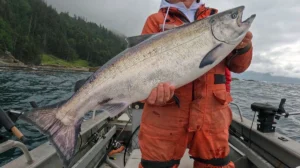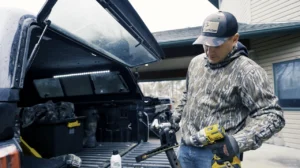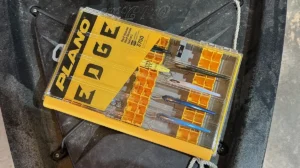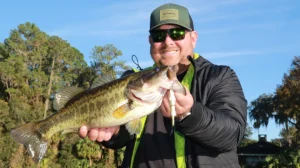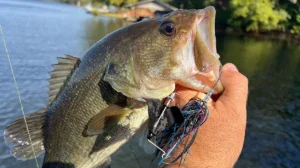Depending on your location in the country, tournament trends continue to evolve. Many are like they were for years but we are seeing small-boat tournament series growing by leaps and bounds and the smaller boats used in them are getting more sophisticated by the day. The popularity of these trails and boats is gaining steam due to decreased towing weight, low cost, lower insurance costs and local horsepower restrictions.
Features that were once only found in bigger boats are now being integrated into smaller versions and the sky is the limit with what might be next. Anglers are a creative bunch and customization just goes with the territory. What was once reserved for grandpa’s pond is now a tournament rig and by its very nature allows more folks to get on the water.
There was already a cottage industry of do-it-yourselfers who found they could create something pretty special with a 14- to 16-foot John boat and many who start from scratch can accessorize them like their big boat cousins. Spending less money on the boat and more on accessories seems to be the norm for these builders. Small packages do have a few disadvantages on large bodies of water when it comes to long runs and rough water but smaller lakes work well for these little boats.
What to look for
When looking for a smaller project boat, I always recommend at least a 16-foot boat and the wider it is, the better. It’s important to remember that most of these boats will be under-horsepowered. I usually look for a boat with titles, those that do not leak and it’s important to have a trailer that looks and works as well as the boat. Finding the right boat is a matter of taste but I prefer a modified V or 4-degree V for my area.
Some folks take older fiberglass models and equip them with a kicker bracket for a small engine, too. Look at the transom and see if it can be customized for a bracket and a kicker motor.
Finding the right boat is more than price. You have to have a vision of what you are going to do to it before buying and looking at the internal structure of the boat is critical. A couple of great resources for others ideas are tinboats.net and deckedoutjonboats.com on the web. I like a stripped-down boat most but have worked on some where demolition was part of the equation. Structural integrity is critical when taking on a project like this.
Be sure to look under the boat as well as in it to eliminate future problems and take a close look at the transom. Most small boats have the transom exposed but check out the splash well corners for cracks and take a close look at all welds. Riveted boats are a little harder to detect leaks in and can be repaired but I like to start with a boat that doesn’t leak in the first place.
Wiring
Wiring the new boat is incredibly important for obvious reasons. Take careful notes and draw diagrams when you begin to wire. In the event of necessary changes or some sort of failure, thorough notes will help you diagnose and locate the issue quicker.
Single-wire without breaks, from electronics/trolling motor directly to batteries is best and make fusible links where you have access to them in the event of a failure. I use 6- or 8-gauge wire for trolling motors and 8- or 10-gauge wire with shielding for electronics. Remember, you are around water and all links should be connected using dielectric grease if possible to prevent corrosion and create better contact. It’s a good idea to shrink tube all connections if possible, too. Wiring is one of the most critical elements of the build, so it’s certainly not something you want to get lazy with.
Weight and width
The lighter the boat, the better as it will perform in most cases. Finding a boat that isn’t “tippy” is tough for 16-foot or smaller boats so maximizing width should be a priority. Wider boats are also more stable and many times draft shallower depending on the type of hull.
Boat manufacturers are beginning to see the new trend for smaller and lighter and are designing many of their new models with a bit more width to accommodate added features. Batteries and fuel are the biggest weight hogs so if you can afford them, Lithium Phosphate batteries like Dakota Lithium are an excellent option. I replaced my AGMs with Dakotas and lost 198 pounds of weight. That is a grown man in weight.
Filling the fuel tank depending on size is also something that takes consideration. Built-in fuel tanks hold 12 or more gallons and it might be a good idea to only put in 6 gallons unless you expect long runs. Some of my friends are removing their built in tanks and replacing them with portable 6 gallon ones.
The trailer is important, too
Many times the trailer is overlooked by the buyer. Make absolutely sure to check for rust, repairs and wiring when looking at the trailer. If it’s equipped with leaf springs, check them out too by simply rocking the boat. You can tell a lot with a squeak or a snap about the integrity of the trailer. LED lighting for trailer lights is an excellent option if you can find one a trailer rigged with them. Also look for wire wear at the plug and where wiring can be seen on the trailer. If possible, also make an effort to check out the bunks of the trailer for wear and cracks with the boat off the trailer.
Engine
Many anglers spend as much on the engine as they do their entire rig. Since most new engines are four strokes that are heavier and not worked on as easily, many look at late-model two strokes for the best performance. With that said, the new engines in the 25-horsepower class are now lighter and have more power. The benefit of four strokes is no mixing of the oil in the gas and they are normally quieter. Dependability of the new fours is also a plus. Most idle better, too. But of course, you’ll pay more for them.
Many of the smaller engines are tiller-steer in this class but can be easily adapted for remote steer as well.
Stay away from plywood and carpet if possible
Many anglers are building raised decks in their project boats and using composites or lighter materials for their decks. Too much weight is an enemy of a smaller boat’s performance. Aluminum sheets or composite decking is a great option. Framing can be built out of aluminum stock or 1×1 channel found at local hardware and home improvement stores. SeaDek is a great option for floor covering. It is lighter, won’t hold moisture and can be customized to fit almost any boat. It is also better on legs and backs and can be cleaned with soap and water or a special cleaner they have called Dek Magic.
Speed matters
Even though the difference between 20 and 22 mph doesn’t seem like much, it can mean a few more casts each day and because a lot of the new wave of small-boat tournaments are being held on smaller lakes, speed efficiency is essential. Fuel economy is also a big advantage and most anglers will fish multiple tournaments on 6 gallons or less of fuel.
It is equally important to have a little knowledge of the outboard mechanics as rest assured, you will be working on it. Always run the best fuel possible and a good ethanol and gas treatment is essential. I have found the new Sea Foam Marine PRO and Lucas Deep Clean as best bets and it doesn’t take much to see a difference. Changing plugs should be done once a year and make sure they are gapped accurately. A mile an hour of speed can be huge with these little rigs.
Adding the best trolling motor and electronics means more battery power is needed so that adds weight. Balancing the load with fuel, batteries and tackle is crucial for smaller boats
Know your limitations and have fun with the project
Some small-boat trails are drawing more entries than their big-boat counterparts and that tells me that anglers are looking at economic factors for their boat purchases as well as the growth in the small boat market. Of course, depending on where you live will determine if a small boat will work for you. Some larger lakes can get gnarly and may not be conducive to smaller boats on windy days.
Always have your safety gear and know your boat’s limitations in rough or shallow water. Chances are, there will be days when a small boat might be a bit limited and long runs may be impossible. Use your noodle on those days. Enjoy the project as you create your small waters rig. The satisfaction of turning an old boat into a tournament-ready rig can be very enjoyable and give you a sense of accomplishment unlike any other.
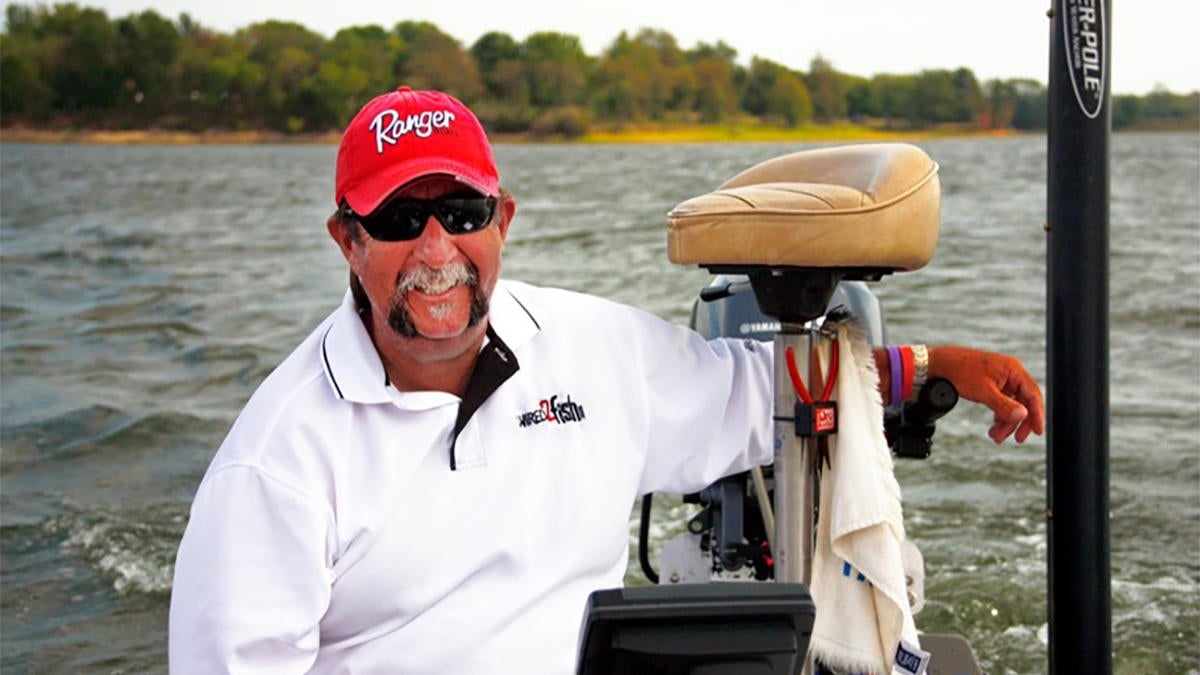




![[VIDEO] How to Install the Garmin Force Pro Trolling Motor](https://www.wired2fish.com/wp-content/uploads/2025/06/trolling-motor-install-300x169.webp)

